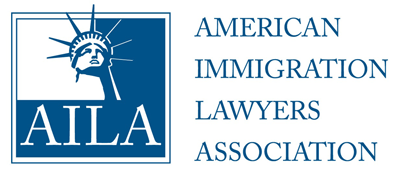CLIENT LOGIN
×A letter to your marriage-based I-485 USCIS interviewing officer

In this post, we will discuss what are the needed components for a letter to be made specifically for a US CIS marriage-based interviewing officer.
At the time of the interview, you have already run the gauntlet. You have patiently waited, submitted countless documents, and have been studious in trying to do everything in accordance with immigration law. Now, the stressful, exciting, mysterious marriage-based green card interview awaits.
Throughout the process, everything has been documented and provided to USCIS. Our office recommends writing a letter to your interviewing officer as a way to introduce yourself, clearly document your relationship timeline, and help to quickly personalize your immigration filing. Although this recommendation is built for the USCIS Raleigh Durham field office, based on many years of filing with that specific office, this recommendation is applicable to any USCIS I485 interview based on marriage to a US citizen.
Again, the purpose of the letter is to introduce and provide a timeline. A marriage is built upon a relationship, and the relationship has many different phases. For instance, there could be a friendship phase, dating phase, engagement phase, and marriage phase. These phases build a timeline that can immediately introduce your relationship to an interviewing officer.
The letters requirements and restrictions:
- The letter must be only one page long. Meaning, one side of a sheet of paper. Officers are busy and introductions should be quick.
- The letter should have a meaningful spousal photo, that is clear, recent, and summarizes either a hobby or a memorable moment. A photo says 1000 words, so, even though the letter is one page long, it will still say a lot.
- Full names should be used
- When describing events, be sure to add geographical location, a date or season, and any meaningful circumstances
- A bulleted list like this one helps showcase the phases of your relationship
- Size 14 font to size 12 font
- 1-inch margin at the minimum
- Letter-sized paper, not A4 or legal size
Mailing requirements:
- Priority mail envelope
- A copy of the interview notice must be present with the letter
- Always confirm delivery
Now, with requirements and restrictions out of the way, an example or template is added below to assist you in modeling your letter. Since variety is the spice of life, please closely review the below items:
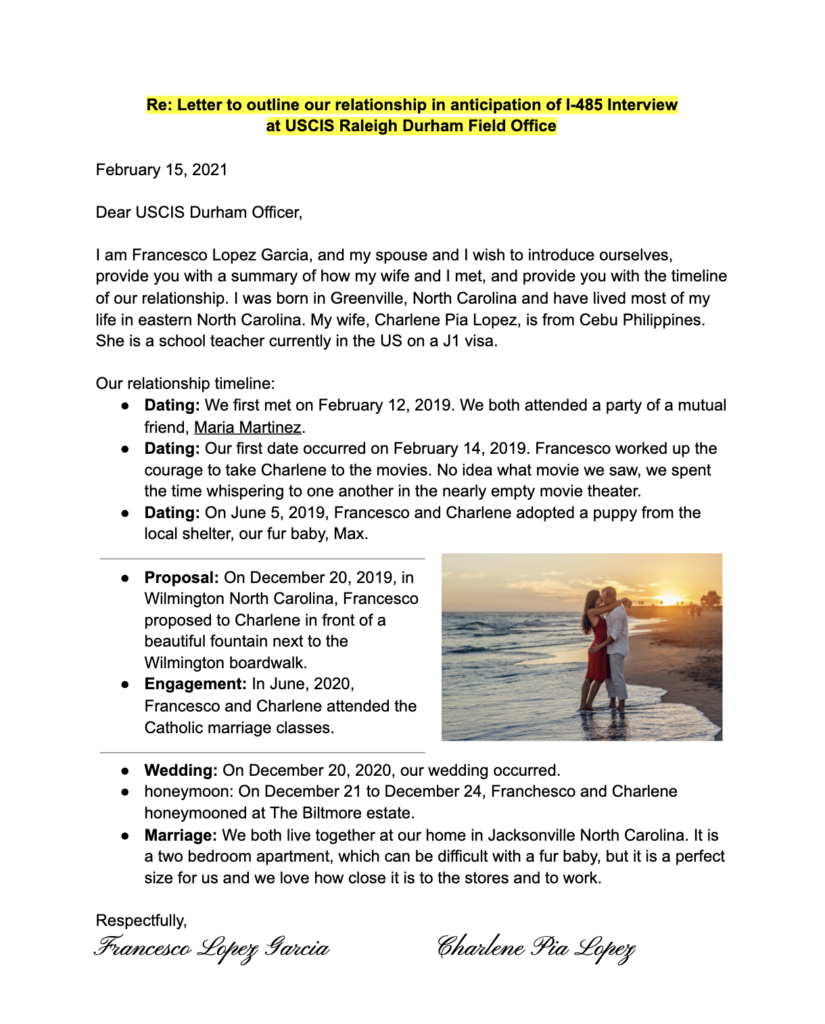

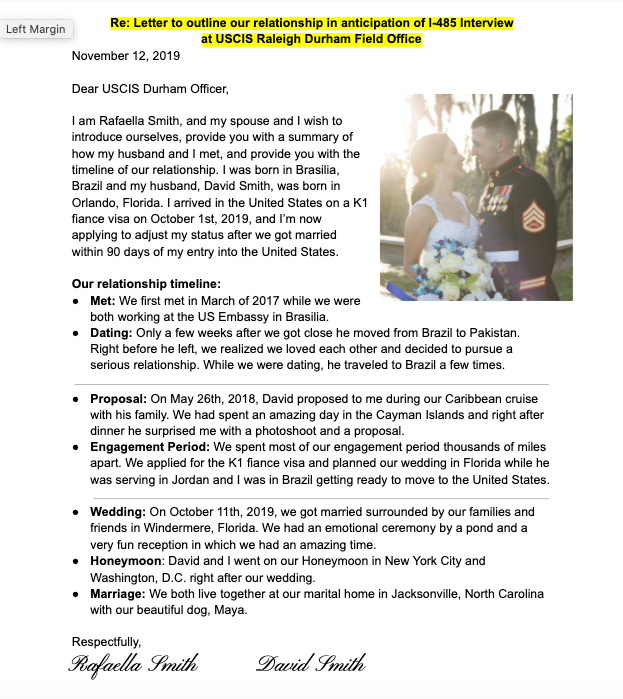
How to send this to your immigration officer?
Submitting this letter is done in two steps. First, it is mailed to the local field office where the interview is scheduled. For our clients, we prefer to send this letter 3 to 4 weeks in advance of the interview. Second, the letter is taken in person to the interview.
The goal is always to put your best foot forward. You only have one chance to make a good first impression. It is more beneficial to have your officer talking with you, versus drawing a timeline and making notes on how you met. The more positive your encounter with your immigration officer, the easier it is to showcase your love and your relationship to your USCIS interviewing officer.
If you would like to set up a consultation with our immigration attorney, please visit our contact page.
Related Blog Posts:
Disclaimer: This Blog is made available by the lawyer or law firm publisher for educational purposes only as well as to give you general information and a general understanding of the law, not to provide specific legal advice. By using this blog site you understand that there is no attorney-client relationship between you and the Blog/Web Site publisher. The Blog should not be used as a substitute for competent legal advice from a licensed professional attorney in your state.
The post A letter to your marriage-based I-485 USCIS interviewing officer appeared first on Fickey Martinez Law Firm.






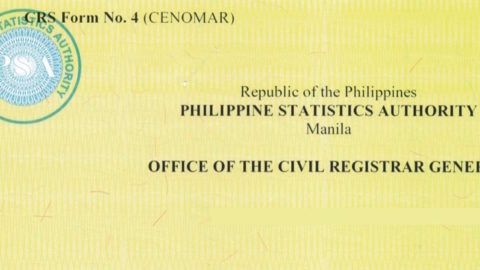
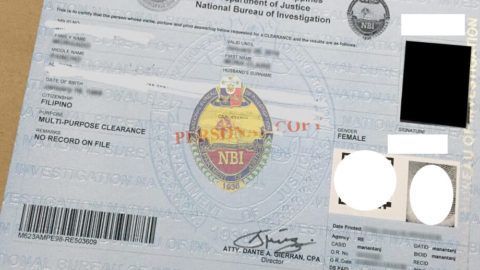

Recent Blog Posts









Jacksonville Office
(910) 526-0066
Orange County, CA Office
13252 Garden Grove Blvd.
Suite 204-106
Garden Grove, CA 92843
DISCLAIMER – The information does not constitute legal advice and please be aware that neither this website nor the use of information from this website creates an attorney-client relationship.
© 2024 Fickey Martinez Law Firm. All Rights Reserved.
This website has been built to be accessible for all users. If you experience any difficulty in accessing this website, please contact us for assistance.

